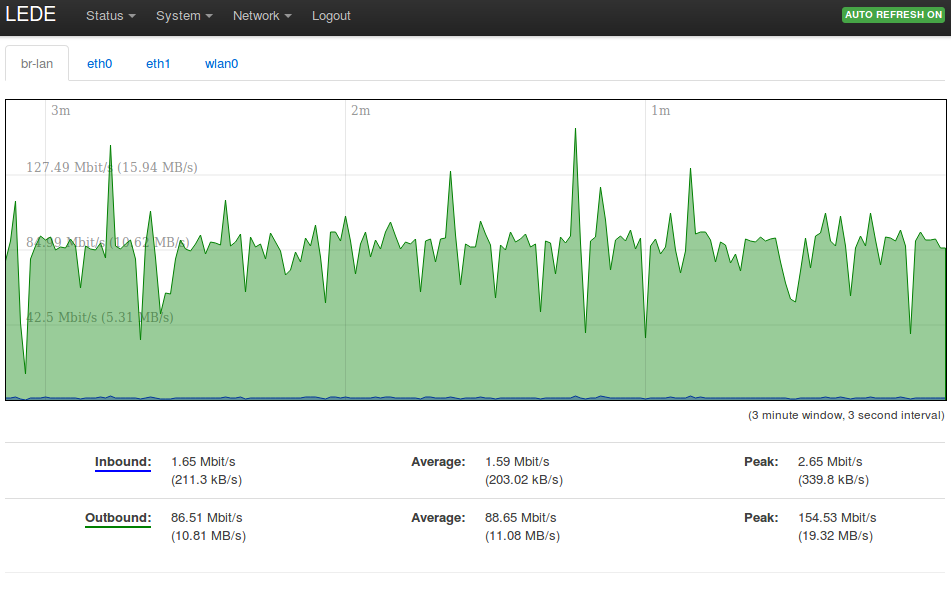Even in the first version of the LTE standards (3GPP Release 8) the specs contained a device category referred to as Category-1 (CAT-1). This category was envisioned for computationally restricted devices with a maximum throughput of 10 Mbit/s. This was little compared to CAT-3 devices which was the lowest class used for smartphones, tables, USB dongles, etc. that had to support a downlink throughput of 100 Mbit/s. Nothing ever came of Cat-1 until a few years ago, when some manufacturers started producing wearable such as watches, i.e. very small devices with small batteries and little space for advanced LTE features.
Category: Uncategorized
Book Review: Ready Player One
Even before I started reading Artemis, I listened to an interview of Andy Weir who recommended ‘Ready Player One’ by Ernest Klein as a must read. Spielberg must have thought so, too, because he’s doing a movie on the book which is coming out this April. But I’m not a great fan of movie adaptations, too much good stuff has to be left out which I thought was another good reason to read the book right now. The story is about a dystopian future, not one of my favorites topic to read about, about computer games, also not my favorite topic, I’m not a gamer, and about the 1980s – now we start talking! So despite some skepticism and a lot speaking against it I started reading… Continue reading Book Review: Ready Player One
Linux Wifi Printing And Scanning – 10 Years Later – The HP OfficeJet 6950
 It’s over 10 years now that I bought my first printer + scanner device with a Wifi interface, an HP C7280. I’ve had it ever since and it was doing a great job over the years. These days, however, my scanner software often only finds the device over the network after many retries and the quality of the scans are markedly deteriorating and wouldn’t much improve even after cleaning the optical components. Also, I’ve had a few ink leakages over the years of which I’m not sure if it was the fault of the printer or the 3rd party cartridges. So it was finally time for a replacement which was a good opportunity to make a comparison to the C7280 to see what has changed in the last decade.
It’s over 10 years now that I bought my first printer + scanner device with a Wifi interface, an HP C7280. I’ve had it ever since and it was doing a great job over the years. These days, however, my scanner software often only finds the device over the network after many retries and the quality of the scans are markedly deteriorating and wouldn’t much improve even after cleaning the optical components. Also, I’ve had a few ink leakages over the years of which I’m not sure if it was the fault of the printer or the 3rd party cartridges. So it was finally time for a replacement which was a good opportunity to make a comparison to the C7280 to see what has changed in the last decade.
Continue reading Linux Wifi Printing And Scanning – 10 Years Later – The HP OfficeJet 6950
When A Telephony Flat is Not a Telephony Flat…
Yes, I know, there isn’t much of meaning left behind certain words such as open, free, unlimited or flat. People including myself do and have to get used to it and look below the surface, i.e. the pages of fine print attached to a contract. The latest twist that I’ve recently come across thanks to a report on Teltarif is that a telephony flat to the national fixed network of one of the bigger resellers in Germany is actually not a flat at all, as over 4500 fixed net destinations with normal national destination codes (‘Vorwahlen’ in German) are excluded and billed per minute!
Continue reading When A Telephony Flat is Not a Telephony Flat…
Thinking the Unthinkable – Mobile Call by Call for International Calls
Thanks to the latest EU roaming regulation that went into effect last summer, it’s now possible to pretty much use a mobile subscription from any country in the EU in any other country in the EU at pretty much the same price like at home. Yes, there are quite some loopholes when it comes to the amount of data but let’s say the general rule holds true. In one particular case it is even significantly cheaper a mobile subscription abroad rather than in the home country: Making calls to a mobile subscriber in a third EU country.
Continue reading Thinking the Unthinkable – Mobile Call by Call for International Calls
Raspbian Support Timeline
I have quite a lot of Raspberry Pis out there in the wild and quite some of them are still running on a Raspbian that is based on Debian 8 ‘Jessie’. I have no incentive, from an application point of view, to upgrade them to a new Debian version because you are never save from side effects. I speak from experience. Last time it broke my channel bonding redundancy setup. Another option is to re-install and configure the applications I use on a fresh install. But that’s not a trivial 5 minute task either.
This has become a bit of a concern to me because the current Raspberry Pi images are based on Debian 9 ‘Stretch’ and there isn’t a firm commitment on any official Raspberry Pi web page that I could find out how long security fixes will be provided for Debian 8 based Raspbian.
Book Review – Artemis
Back in summer 2015 I read “The Martian” by Andy Weir and I found it so extraordinary that I read it in 2 days flat. I can’t remember when I’ve done that the last time. Now his latest novel is out: Artemis. I didn’t actually notice it at first, my ad filters seem to work pretty well. But then, he was interviewed by Leo Laporte on Triangulation and what can I say, I was instantly convinced to get a copy of his latest novel as well.
Why a Linksys 1200AC and not a 1900AC or 3200ACM?
After posting my experiences with Open Source Software on the Linksys 1200AC router I got some questions around the topic of why I went for this router and not for one of its higher spec cousins such as the 1900AC or the 3200ACM!? The simple answer is that while in theory these routers offer faster over the air speeds, I won’t be able to use any of it in practice anytime soon.
Continue reading Why a Linksys 1200AC and not a 1900AC or 3200ACM?
Running a Linksys 1200AC with Open Source Software
 After some years it was time again to invest in new Wifi Access Point hardware for an upcoming event and as a replacement for pretty much outdated Wifi equipment that has become the bottleneck of the network. Obviously, I wanted a Wifi router on which I could run something free and open on. After having taken a look at different options my choice fell on the Linksys 1200AC as it is said to be easily upgradable to open source router software and has good 802.11ac features for a reasonable price (€120 euros including taxes). What was a bit shocking for me was how ‘mainstream’ vendor supplied software has actually become since I last bought a Wifi access point.
After some years it was time again to invest in new Wifi Access Point hardware for an upcoming event and as a replacement for pretty much outdated Wifi equipment that has become the bottleneck of the network. Obviously, I wanted a Wifi router on which I could run something free and open on. After having taken a look at different options my choice fell on the Linksys 1200AC as it is said to be easily upgradable to open source router software and has good 802.11ac features for a reasonable price (€120 euros including taxes). What was a bit shocking for me was how ‘mainstream’ vendor supplied software has actually become since I last bought a Wifi access point.
Continue reading Running a Linksys 1200AC with Open Source Software
Thinking the Unthinkable: The End of Circuit Switching
Quite a number of network operators are in the processes of shutting down their 2G or 3G networks or have already done so. A major example is AT&T who has switched off their 2G network back in 2017. In other words, they are now only running on their UMTS and LTE networks. So what will happen once they switch off UMTS as well?
Continue reading Thinking the Unthinkable: The End of Circuit Switching